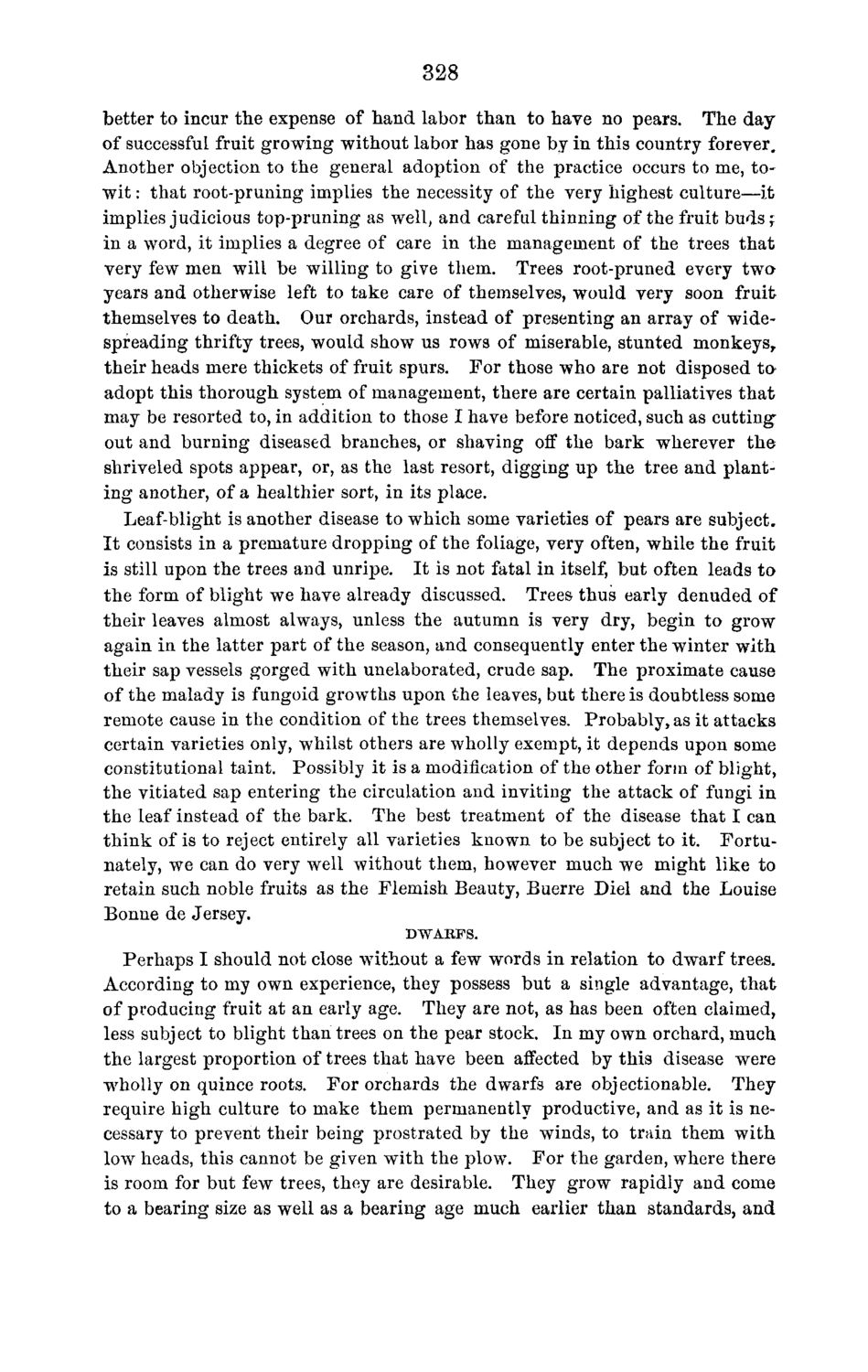| |
| |
Caption: Board of Trustees Minutes - 1870
This is a reduced-resolution page image for fast online browsing.

EXTRACTED TEXT FROM PAGE:
328 better to incur the expense of hand labor t h a n to have no pears. The day of successful fruit growing without labor has gone by in this country forever. Another objection to the general adoption of the practice occurs to me, tow i t : t h a t root-pruning implies the necessity of the very highest culture—it implies judicious top-pruning as well, and careful thinning of the fruit b u d s ; in a word, it implies a degree of care in the management of the trees t h a t very few men will be willing to give them. Trees root-pruned every two* years and otherwise left to take care of themselves, would very soon fruit themselves to death. Our orchards, instead of presenting an array of widespreading thrifty trees, would show us rows of miserable, stunted monkeys, their heads mere thickets of fruit spurs. For those who are not disposed t a adopt this thorough system of management, there are certain palliatives t h a t may be resorted to, in addition to those I have before noticed, such as cutting out and burning diseased branches, or shaving off the bark wherever t h e shriveled spots appear, or, as the last resort, digging up the tree and planting another, of a healthier sort, in its place. Leaf-blight is another disease to which some varieties of pears are subject. I t consists in a premature dropping of the foliage, very often, while the fruit is still upon the trees and unripe. I t is not fatal in itself, but often leads t o the form of blight we have already discussed. Trees thus early denuded of their leaves almost always, unless the autumn is very dry, begin to grow again in the latter part of the season, and consequently enter the winter with their sap vessels gorged with unelaborated, crude sap. The proximate cause of the malady is fungoid growths upon the leaves, but there is doubtless some remote cause in the condition of the trees themselves. Probably, as it attacks certain varieties only, whilst others are wholly exempt, it depends upon some constitutional taint. Possibly it is a modification of the other form of blight, t h e vitiated sap entering the circulation and inviting the attack of fungi in the leaf instead of the bark. The best treatment of the disease that I can t h i n k of is to reject entirely all varieties known to be subject to it. Fortunately, we can do very well without them, however much we might like to retain such noble fruits as the Flemish Beauty, Buerre Diel and the Louise Bonne de Jersey. DWARFS. Perhaps I should not close without a few words in relation to dwarf trees. According to my own experience, they possess but a single advantage, t h a t of producing fruit at an early age. They are not, as has been often claimed, less subject to blight than trees on the pear stock. In my own orchard, much the largest proportion of trees that have been affected by this disease were wholly on quince roots. F o r orchards the dwarfs are objectionable. They require high culture to make them permanently productive, and as it is necessary to prevent their being prostrated by the wTinds, to train them w i t h low heads, this cannot be given with the plow. F o r the garden, where there is room for but few trees, they are desirable. They grow rapidly and come to a bearing size as well as a bearing age much earlier than standards, and
| |